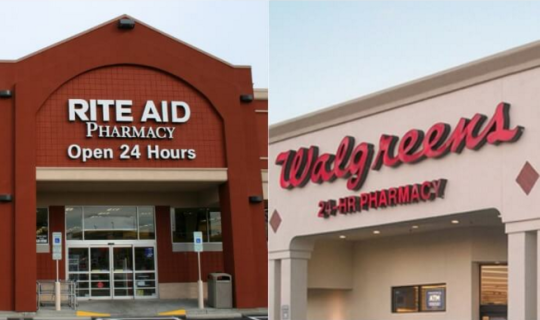
Merger and acquisition activity in retail is heating up again, most notably with the recently announced Walgreens/Rite Aid deal. According to a June 2015 Forbes article, “More than half (53%) of retail and consumer products companies (CPR) across the globe are expected to pursue acquisitions in the next 12 months, up from 39% in October 2014.”
The RTP team explores merger fever from multiple angles, including Wall Street’s influence, mergers’ impact on consumers and employees, and what will really give a giant drugstore chain greater negotiating clout.
Debbie Hauss, Editor-in-Chief: Wall Street’s perceptions of a retail company can make or break a business in the world of public companies. All smart executives at public companies think about the ROI of business decisions and how their movements are valued by the financial pundits. The perception of company leaders also goes a long way in helping or hurting a company’s public value. Walgreens may be in good shape as it forges forward into a massive buyout of Rite Aid. CEO Stefano Pessina has shown strength in posting positive quarterly earnings while planning significant cost cuts since the company merged with Europe-based Alliance Boots. Pessina also has insinuated there could be other deals made between Walgreens and pharmaceutical partners. When a large and growing company, such as Walgreens, continues to perform and improve business efficiencies, it is good for the overall economy — which puts a smile on the faces of Wall Street analysts.
Glenn Taylor, Associate Editor: As a consumer, there is always going to be a concern about merger activity. Traditionally, one would think that prices would go up as there is one less major competitor in the industry. However, Walgreens will likely have the opportunity to negotiate better prices with health care providers and pharmaceutical companies, to have a chance at offering better plans. Competition in any industry certainly is welcomed because more companies involved can offer a better service, and influence how rival companies do business. As a customer, that is where my fear would lie with Walgreens: Will they step up and provide the best service, or will they pull back the reins a little bit and lessen the focus on that in-store experience?
Adam Blair, Executive Editor: Like any business deal, a merger/acquisition comes with costs as well as benefits, and employees losing their jobs as the result of redundancies or store closings is a very human-scaled cost. But the “debits” are not just personal: There often are negative impacts on the workers who keep their jobs, in the form of lower morale, newly increased workloads and loss of institutional knowledge. These issues probably are even less visible in retail than in other industries because it’s so geographically decentralized, but their effects can be felt down to the store level. While the potential for job losses shouldn’t be a reason to stop a merger if it makes financial and business sense otherwise, a more realistic appraisal of the actual human and organizational costs being incurred should be a factor in companies’ decision-making.
Rob Fee, Managing Editor: Executives touting the benefits of the proposed Walgreens/Rite Aid merger pointed to increased negotiating power with pharma companies as a key benefit to consumers. I do believe this is true, but it’s not due to the size of the combined company. Instead, this power will come from the pharmacy benefits management division within Rite Aid, which serves as third party administrator of prescription drug programs for a variety of companies by processing and paying prescription drug claims. While this leads to a lot of influence with pharma companies, there are examples where these companies did not act in their customers’ best interest. A few years ago, CVS Caremark paid $20 million to three states to settle fraud charges that stemmed from allegations that its pharmacy benefits management division kept discounts and rebates rather than passing along those savings to members. While I have no doubt that this proposed merger will result in increased power that benefits the pharmacy chain, consumers should remain cautious.
Alicia Fiorletta, Content Strategist: The retail and consumer goods industries seem to have the most movement when it comes to mergers and acquisitions. As noted by Mergermarket, global consumer mergers and acquisitions had a combined transaction value of $202.5 billion in the first half of 2015, and retail experienced a year-over-year increase in transactions of approximately 130%. These results indicate that the market shows no signs of slowing down as we go into 2016. Although the convergence of big-name brands grabs a lot of headlines, I’m especially excited to see how larger retail brands strategically purchase smaller start-ups. (Consider Nordstrom’s acquisition of Trunk Club as an example.) I find these deals extremely interesting because they are strong win-wins: The big-name brand shows that it’s savvy by purchasing an innovative business, and the smaller brand shows its value and impact in the industry, and acquires more funds, clout and manpower to expand its business.






